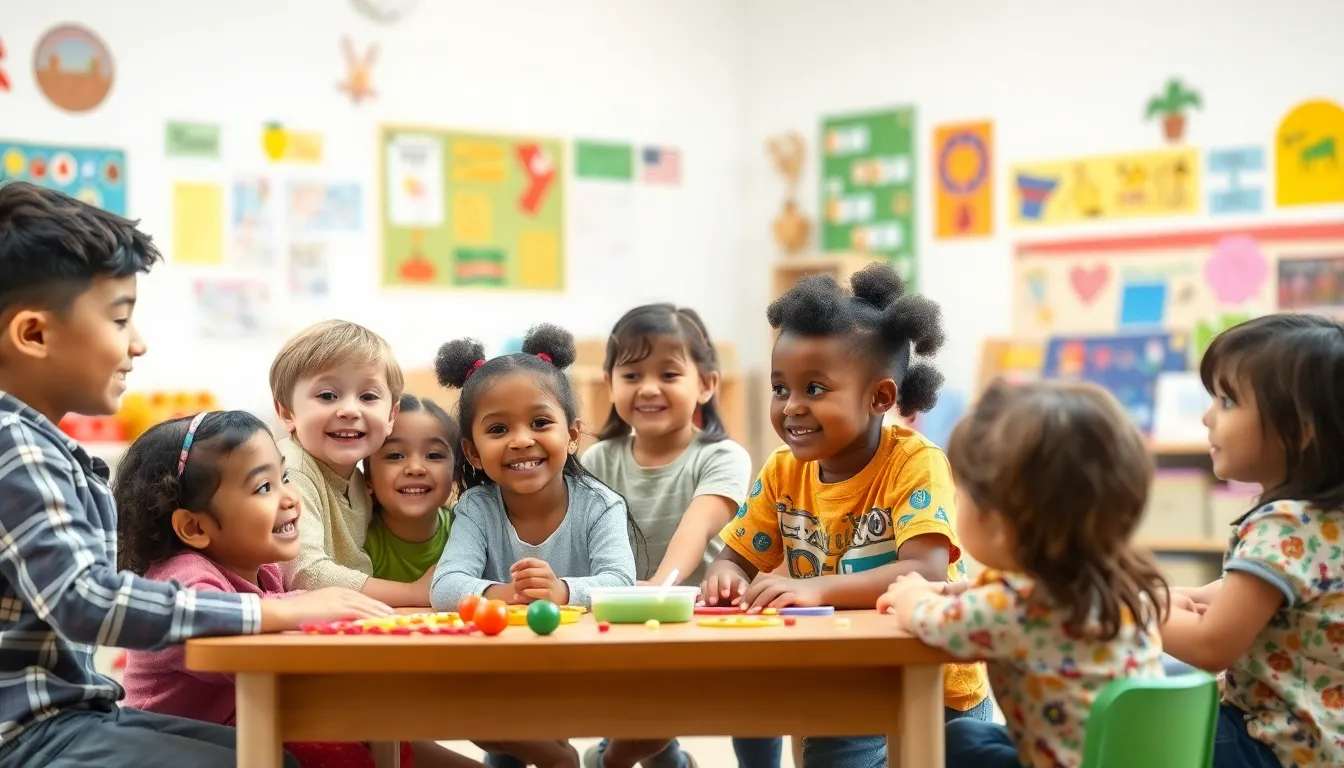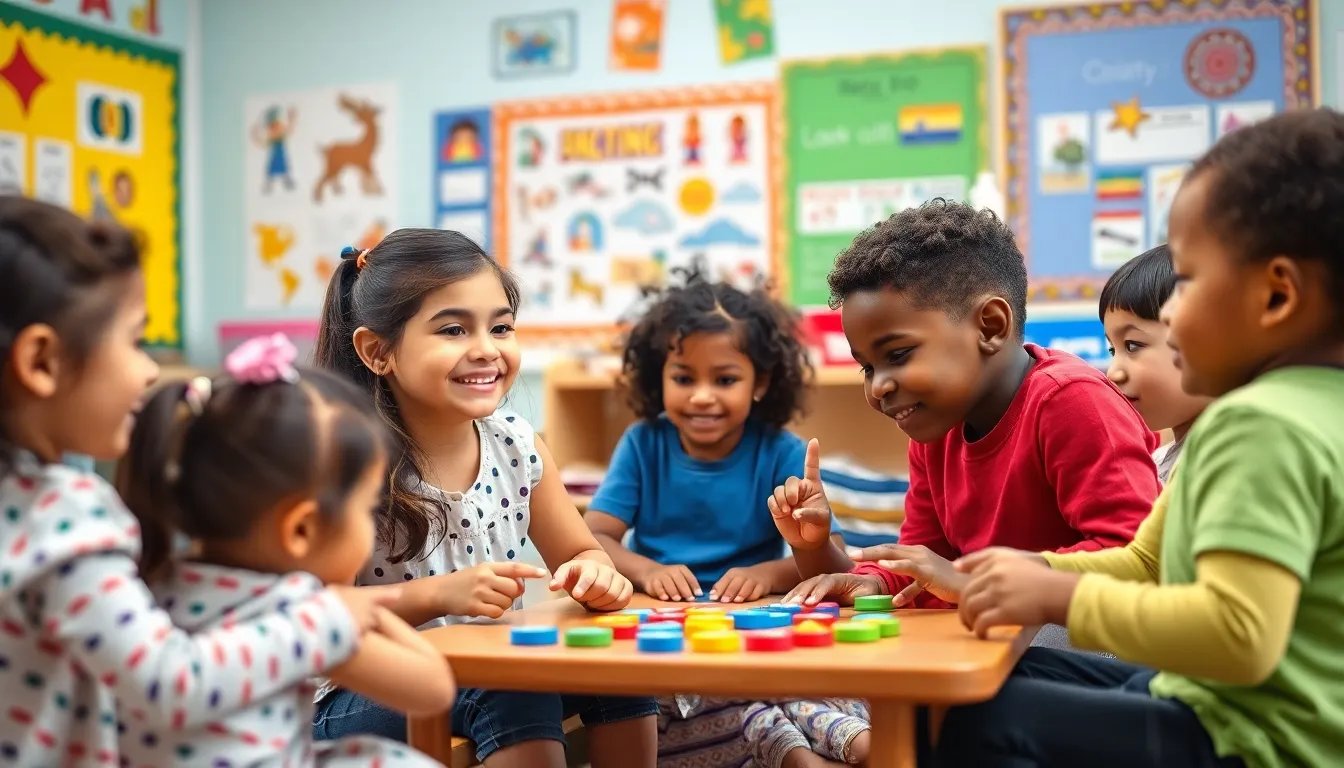In a world that’s more connected than ever, raising a bilingual child is like giving them a superpower. Imagine your little one effortlessly switching between languages, charming everyone from grandpa to the barista at their favorite café. Bilingual preschools are not just trendy; they’re a passport to a world of opportunities.
These vibrant learning environments offer more than just ABCs and 123s. They immerse kids in a rich tapestry of language and culture, all while they play, sing, and create. Plus, let’s be honest—who wouldn’t want their toddler to impress their friends with a few words in Spanish or Mandarin? With the right bilingual preschool, children aren’t just learning languages; they’re building confidence and cognitive skills that’ll last a lifetime. So, why not give them the gift of language and watch them thrive?
Table of Contents
ToggleWhat Is A Bilingual Preschool?
A bilingual preschool focuses on teaching children two languages concurrently. Typically, children engage in learning activities designed to foster fluency in both languages. Curriculum elements include storytelling, songs, and games, which immerse children in diverse linguistic contexts.
Teachers often employ interactive methods to create an engaging environment. They encourage children to communicate in both languages through daily routines and structured lessons. This approach enhances not just language skills but also cognitive development.
Bilingual preschools frequently celebrate cultural diversity, exposing children to traditions from various backgrounds. Activities may include themed celebrations, language story hours, and multicultural art projects. These experiences help shape children’s understanding and appreciation for different cultures.
Research indicates that exposure to multiple languages at an early age can benefit overall brain development. Studies demonstrate improved problem-solving skills and greater cognitive flexibility among bilingual children. In addition, bilingualism often leads to heightened social awareness and empathy.
Parents looking for quality education may find bilingual preschools a strong option. Such schools prepare children for an increasingly globalized world. Children develop not only language skills but also valuable social abilities that can enhance future opportunities.
Benefits Of Bilingual Preschool

Bilingual preschools offer significant advantages, enhancing cognitive and social skills in young learners. These programs provide unique opportunities for children to thrive in a multicultural learning environment.
Cognitive Advantages
Research indicates that bilingual education boosts cognitive abilities. Children learning multiple languages demonstrate improved problem-solving skills and greater cognitive flexibility. Enhanced brain development occurs through exposure to different linguistic structures. Engaging activities such as storytelling and interactive games support this growth, allowing children to think creatively and adapt to various situations. Moreover, bilingualism encourages critical thinking by challenging children to analyze and compare languages. This cognitive stimulation fosters a love for learning, setting a solid foundation for future academic success.
Social Skills Development
Social skills flourish in bilingual preschool settings. Children naturally engage with peers, learning to communicate across languages and cultures. Frequent interactions help develop empathy and cultural awareness. Participation in themed celebrations and multicultural projects promotes teamwork and cooperation. These experiences create connections among children from diverse backgrounds. Additionally, bilingualism enhances social interactions, equipping children for future social settings. They become adept at navigating conversations and building relationships, paving the way for lifelong communication skills.
Choosing The Right Bilingual Preschool
Selecting the right bilingual preschool involves careful consideration of various factors. Parents must prioritize programs that effectively balance language instruction while promoting cognitive and social development.
Key Factors To Consider
Curriculum quality plays a crucial role in a preschool’s effectiveness. Engaging and interactive methods enrich language learning experiences. Facility size impacts individual attention, so smaller class sizes often ensure more personalized interactions. Teacher qualifications also matter; educators trained in bilingual instruction can better facilitate language acquisition. Lastly, cultural inclusivity enhances the learning environment, fostering empathy and understanding among diverse students.
Questions To Ask
Inquire about language exposure in the curriculum. How much time do children spend learning each language daily? Ask about teacher qualifications and their experience with bilingual education. Explore the methods used for language immersion—do they involve activities like storytelling and games? Evaluate how the school supports social interaction among peers, which aids language development. Lastly, consider the school’s approach to cultural celebrations—what opportunities do they provide for children to engage with different cultures?
Curriculum In Bilingual Preschools
Bilingual preschools employ structured, interactive curricula designed to nurture language skills alongside cognitive and social abilities.
Language Acquisition Methods
Children in bilingual preschools experience dual-language immersion through diverse methods. Storytelling, songs, and games serve as key tools for language acquisition. These engaging activities encourage participation, reinforcing vocabulary and pronunciation. Teachers utilize repetition and context to make learning intuitive. Individual and group exercises promote fluency in both languages simultaneously. Research backs this approach, showing that immersive environments enhance cognitive flexibility and problem-solving abilities. Successful bilingual education incorporates interactive play, making language learning enjoyable and effective.
Cultural Integration
Cultural integration plays a vital role in the bilingual preschool curriculum. Children explore diverse cultures through themed celebrations and projects. This exposure cultivates empathy and global awareness from a young age. Participation in multicultural events fosters cooperation among peers. Teachers incorporate cultural artifacts, music, and food to broaden children’s perspectives. Class activities often highlight traditional customs, enhancing social bonding. Such experiences instill a sense of belonging and appreciation for diversity, preparing children for participation in a multicultural society. Bilingual preschools thus ensure that language learning aligns with cultural understanding, creating well-rounded individuals.
Bilingual preschools offer a dynamic environment where children can thrive linguistically and socially. By engaging in immersive activities and cultural experiences, kids not only learn two languages but also develop essential cognitive and social skills. This unique educational approach prepares them for a diverse world, fostering empathy and understanding from an early age.
Parents looking for the right bilingual preschool should focus on programs that balance language instruction with cognitive development. Prioritizing quality curricula and teacher qualifications ensures that children receive the best possible foundation for their bilingual journey. Ultimately, choosing a bilingual preschool equips children with invaluable skills that will benefit them throughout their lives.




